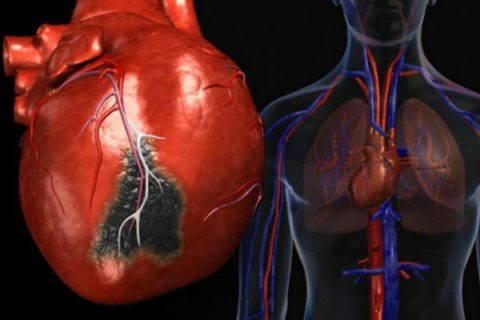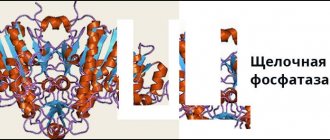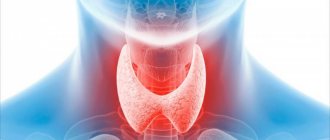Home / Articles / Biochemical blood test for phosphorus: indications, preparation, results
Phosphorus is one of the most important substances for humans, as it takes part in the processes of synthesis and regeneration of bone tissue, the activity of the nervous system, and muscle contraction. In addition, the absorption of calcium and vitamin D directly depends on the level of this mineral. The concentration of phosphorus in the blood can be assessed as part of a biochemical analysis. Find out in what cases it is prescribed and what other studies are worth undergoing.
Indications
A doctor may prescribe a biochemical blood test for phosphorus to a person who complains of:
- to decrease muscle tone,
- rapid development of caries,
- frequent fractures and recovery taking too long after them,
- weakness, dizziness, loss of consciousness,
- convulsions, tremors.
Indications for research may also include:
- formation of kidney stones,
- pathology of the thyroid gland,
- disorders of the gastrointestinal tract and urinary system.
People who:
- follow a strict diet for a long time - a deficiency of phosphorus and calcium, which affects its level, can result from refusal of dairy products, nuts, meat, poultry and fish;
- abuse alcohol - when consumed regularly, alcohol disrupts the absorption of nutrients from food and metabolism;
- They regularly take vitamin-mineral complexes and various supplements with calcium, phosphorus, vitamin D - laboratory diagnostics will allow you to eliminate an excess of nutrients and adjust the dosage.
Phosphorus
Inorganic phosphorus
- one of the main mineral components of bone tissue, necessary for the normal functioning of the central nervous system. This trace element is contained in the body in the form of salts (calcium, magnesium phosphates, etc.). Phosphorus is vital for bone formation and cellular energy metabolism. It is part of nucleic acids that take part in the processes of growth, cell division, storage and use of genetic information. About 85% of the total phosphorus is concentrated in the bones.
In blood plasma and bones, phosphorus is present mainly in the form of phosphates. The concentration of inorganic phosphorus in the blood depends on the reabsorption of phosphates in the tubules of the kidneys, the ratio of the processes of synthesis and resorption in the bones (where about 85% of the total amount of phosphorus in the body is located), to a lesser extent - on the release of phosphates from the cells of other tissues and the processes of absorption and excretion in gastrointestinal tract. The main regulator of phosphorus balance in the body is parathyroid hormone, calcitonin and vitamin D.
For clinical diagnosis, the ratio of calcium and inorganic phosphorus in the blood and the determination of the concentration of this element in the urine are important (see Biochemistry of urine: 23.109 Phosphorus).
Indications:
- bone diseases;
- kidney diseases;
- diseases of the parathyroid glands.
Preparation
It is recommended to donate blood in the morning, between 8 am and 12 pm. Blood is drawn on an empty stomach, after 6–8 hours of fasting. It is allowed to drink water without gas and sugar. On the eve of the examination, food overload should be avoided.
Interpretation of results
Units of measurement: mmol/l.
Increased phosphorus levels (hyperphosphatemia):
- hypoparathyroidism;
- treatment with antitumor cytostatics (cell cytolysis and release of phosphates into the blood);
- acute and chronic renal failure;
- destruction of bone tissue in malignant tumors (especially with metastasis), leukemia;
- osteoporosis;
- hypoparathyroidism, pseudohypoparathyroidism;
- acidosis (ketoacidosis in diabetes mellitus, lactic acidosis, respiratory acidosis);
- hypervitaminosis D;
- acromegaly;
- portal cirrhosis;
- healing of bone fractures.
Decreased phosphorus levels (hypophosphatemia):
- osteomalacia;
- rickets in children (early and preclinical diagnosis is possible);
- familial hypophosphatemic rickets;
- malabsorption syndrome;
- severe diarrhea, vomiting;
- hyperparathyroidism - primary and ectopic hormone synthesis by malignant tumors;
- familial hypocalciuric hypercalcemia;
- severe hypercalcemia of various etiologies;
- acute gout;
- hyperinsulinemia (in the treatment of diabetes mellitus);
- pregnancy (physiological phosphorus deficiency);
- deficiency of somatotropic hormone (growth hormone);
- pellagra.
Additional Research
Doctors usually prescribe a biochemical blood test for phosphorus at the same time as assessing the concentration of calcium and vitamin D to rule out disorders of phosphorus-calcium metabolism in general. Additionally, a specialist may prescribe a test for the level of phosphorus in daily urine. This will eliminate mineral metabolism disorders caused by kidney failure.
You can take tests to assess mineral metabolism in our clinic. See the cost of tests on the website or call the specified phone number.
All articles
5% discount Print coupon from our website

Ask your question on the website Get professional advice!
Low phosphorus: causes and signs

Alcohol intake impairs phosphorus absorption
The development of hypophosphatemia is caused by insufficient levels of elements necessary for the absorption of P. For example, a deficiency in protein in the diet is accompanied by a decrease in the level of P in the blood. Constant consumption of alcohol provokes the development of chronic R deficiency. Microelement malabsorption occurs in various malabsorption syndromes.
Increased loss of P in the urine is the result of diseases of the endocrine system, when the synthesis of parathyroid hormone exceeds the physiological need. Another reason is excessive dosage of diuretics.
A decrease in P concentration in the blood is accompanied by a disturbance in the acid-base balance, when alkali compounds accumulate in the body. An excess of certain elements leads to the development of phosphorus deficiency, primarily calcium, as well as aluminum and magnesium.

Muscle weakness may be a sign of hypophosphatemia
The movement of P compounds from the extracellular space into cells occurs during intensive treatment of diabetic ketoacidosis, resumption of normal nutrition after prolonged malnutrition, recovery after removal of the parathyroid glands, and respiratory alkalosis.
Acute hypophosphatemia occurs with alcohol intoxication, extensive burns, increased ventilation of the lungs, and in the postoperative period.
A mild form of P deficiency usually does not manifest itself clinically; with a significant decrease in P concentration in the blood, muscle weakness, bone pain, and convulsions are felt. Symptoms of liver dysfunction, pathological fractures, softening and deformation of skeletal bones are observed.
What are the dangers of deviations from the norm?

Significant fluctuations in phosphorus are the cause of vascular accidents
With an excessive concentration of P in the body, metabolism is disrupted, the most common consequence is the leaching of calcium from the bones. Damage to bone tissue is accompanied by tooth destruction and frequent bone fractures. In this case, calcium moves into the bloodstream, which leads to the formation of calcium deposits in the vessels. This condition provokes the development of cardiovascular pathology, in particular, coronary heart disease and heart failure.
The consequences of hyperphosphatemia are damage to the intestines and liver, and deposition of stones in the kidneys. Characterized by a decrease in the number of leukocytes and the development of anemia. The body's protective functions decrease, cases of infectious diseases become more frequent, and spontaneous hemorrhages may occur. An increase in P levels in the blood increases the risk of heart attack and death from cardiovascular pathologies.

Impaired sensitivity - consequences of phosphorus deviations
Hypophosphatemia in infants leads to the formation of rickets, a disruption of bone growth processes. The immune system, both in children and adults, is not able to provide full protection of the body, since the functions of leukocytes are impaired. Efficiency and concentration decrease, the nervous system undergoes changes - apathy alternates with increased excitability and irritability. There may be a decrease in sensitivity to the point of numbness of the skin or excessive sensitivity to cold or touching the skin.
The process of muscle contraction, including the heart muscle, is disrupted. There is a negative impact of phosphorus deficiency on the overall metabolism of the body and acid-base balance.
In severe forms of phosphorus deficiency, brain damage occurs, which can lead to coma and death.
Correction of phosphorus levels: diet and medication correction

If such signs are detected, a study is recommended
When correcting the P level, the cause of the pathology is first identified in order to eliminate it. During therapy, regular monitoring of P and calcium levels in the blood is performed.
With hyperphosphatemia, the consumption of food containing a high concentration of P is limited: dairy, meat, fish products. Drugs that bind P compounds are prescribed. The choice of drug depends on the concomitant disease and condition of the patient. Effective aluminum-based preparations are used with extreme caution in cases of renal failure or are replaced with calcium acetate and carbonate. If there is a risk of developing hypercalcemia, calcium-free products are used, for example, allylamine hydrochloride polymer. A course of diuretics is prescribed for normal renal function, and dialysis for end-stage renal failure.
For hypophosphatemia, foods rich in P are introduced into the diet: tuna, salmon, sardines, shrimp, crabs, milk and dairy products, chicken eggs, pork and beef, mushrooms, pumpkin seeds, legumes, nuts. The prescription of drug treatment depends on the level of P in the blood, the duration of the deficiency and the cause of its formation. Products containing P, sodium and potassium are often prescribed. All medications that contain elements that bind compounds P, as well as diuretics, are discontinued. If the factor causing P deficiency is a lack of vitamin D, drugs based on it are used.
Symptoms of hyperphosphatemia
In some cases, a completely asymptomatic course of this condition is possible. Clinical manifestations are mainly related to hypocalcemia. Due to increased neuromuscular conductivity, muscle cramps and spasms occur. Some patients complain of paresthesia (tingling sensation, crawling sensations) of the limbs.
Due to weakening of vascular tone and cardiac output, blood pressure decreases - the patient may experience dizziness, a feeling of increased and rapid heartbeat. Clinical signs of hypocalcemia are much more pronounced if the cause of hyperphosphatemia is chronic renal failure or hypoparathyroidism. Calcification of soft tissues causes itching of the skin and joint pain, aggravated by movement. Hard subcutaneous nodules form in the area of the projection of the joints.
Test for phosphorus in the blood: indications and preparation

Kidney pathology - indication for analysis
Analysis is prescribed in the following cases:
- bone diseases;
- pathologies of the parathyroid glands;
- hypo- and hypercalcemia;
- kidney disease;
- violation of acid-base balance.
Preparation rules.
- The day before the study, you should stop taking alcohol and drugs containing R.
- Excessive physical activity is limited during the day.
- The last meal should be completed 8-10 hours before the blood sample is taken.
- Before taking the test, you can drink only clean, still water.
Complications
Hyperphosphatemia can cause a large number of adverse effects. Bone disorders are especially common. Developing secondary hyperparathyroidism stimulates the release of calcium ions from bone depots, which leads to osteoporosis and osteomalacia. The deposition of phosphorus-calcium salts on the walls of blood vessels accelerates the progression of atherosclerosis, the main cause of cardiovascular diseases (myocardial infarction, stroke).
The deposition of phosphates in the renal tubules contributes to the occurrence of urolithiasis. With prolonged hyperphosphatemia, calcification of basal ganglia neurons occurs (parkinsonism, dystonia). Metastatic calcification of periarticular tissues can significantly impede joint movement. Sometimes hypocalcemia provokes life-threatening arrhythmias and coronary spasm. Some patients develop cataracts.
Interpretation of results
In patients over 12 years of age, the macronutrient level should be in the range of 0.81-1.45 mmol per liter. For children of different age groups, their own reference values have been established. To correctly interpret the results, establish an accurate diagnosis and prescribe treatment, you must consult a doctor. The test is not intended for self-diagnosis.
Decreased macronutrient levels
there may be various reasons. These include, for example, uncontrolled use of a number of drugs, hypothyroidism, rickets, hyperparathyroidism, malnutrition, hypokalemia, and alcoholism. Decreased rates are also observed in patients with severe burns.
For children, the macronutrient norm is higher than for adults. Until the age of 12, maintaining its normal level is especially important. A deficiency can cause brittle bones and short stature.
Excess phosphorus
can be caused by kidney and liver diseases and a number of other pathologies. Over time, excess phosphates can be deposited in tissues, causing damage to internal organs.
It must be taken into account that eating food within 2-3 hours before taking blood leads to falsely low results. During the day, the concentration of macroelements in the blood is subject to fluctuations (in the evening it increases). In addition, phosphorus levels are affected by many medications. Therefore, the doctor who will interpret the test results must be informed about the use of medications prescribed by other specialists.
Prognosis and prevention
With hyperphosphatemia, the prognosis is directly determined by the cause that caused it (extremely unfavorable for chronic renal failure and favorable for hypoparathyroidism). Hyperphosphatemia itself can very rarely be the direct cause of death, and even in these cases, deaths are associated with severe hypocalcemia (heart rhythm disturbances, coronary vasospasm) that occurs against the background of elevated phosphate levels.
Prevention of hyperphosphatemia involves timely diagnosis and treatment of those diseases and conditions that can lead to it. To prevent this disorder, regular monitoring of plasma phosphate concentrations is necessary in risk groups - patients on hemodialysis, receiving chemotherapy, parenteral nutrition.






